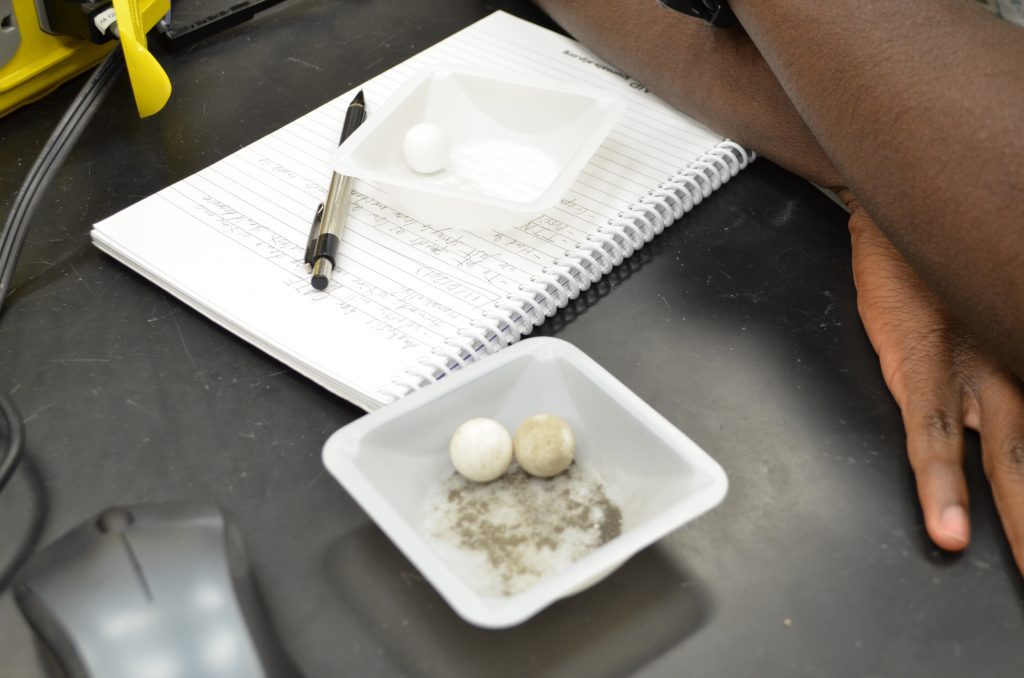BY| Chris Tiller
 For the CATE experiment, we’re going to be launching an object through what is essentially a cloud of dust. As with every other component of the experiment, the object we’re launching requires some thought as well.
For the CATE experiment, we’re going to be launching an object through what is essentially a cloud of dust. As with every other component of the experiment, the object we’re launching requires some thought as well.
So in the end, we decided to go with two sets of marbles: one set of 20mm Rose Quartz Spheres, and another of 25mm Rose Quartz Spheres. The reason we chose Quartz as opposed to some other mineral is because it is a silicate mineral (one that contains both Silicon and Oxygen). As it turns out, silicates are in abundance in celestial bodies such as asteroids, comets, and planetesimals (essentially, almost anything that would be flying through space collecting dust). This is a good way to make sure our experiment simulates collisional accretion as closely as possible.
But why so big? That is purely for design reasons. As it stands, the tubes for our experiment are going to be approximately 2 inches (~5 cm) in diameter. We want to launch something that is of substantial size so we actually get some usable data, but not too large so that the data basically becomes useless. In the end, around 20-25mm seems to be in the range of a good, medium size to get the desired effect.
